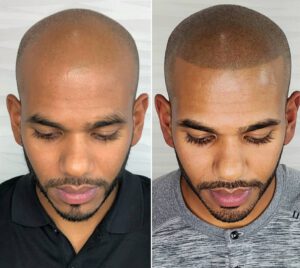What To Expect From Scalp Micropigmentation
If you’re considering scalp micropigmentation, you’re probably wondering what to expect during the procedure. It’s a delicate balance of action and aesthetics, and while many practitioners are capable of working with a needle, the result is largely dependent on how they present the finished product. Among the most important factors is the natural look, and this article will explain what you can expect. Listed below are some important things to know about scalp micropigmentation.
 The process of micropigmentation is similar to tattooing, using detailed micro-needles to deposit pigment on the scalp. The result is the appearance of tiny hair follicles, which can help you regain fuller, healthier hair and camouflage any transplant scars. There are a few things to consider before choosing a professional for your procedure, including the skill level of the SMP artist.
The process of micropigmentation is similar to tattooing, using detailed micro-needles to deposit pigment on the scalp. The result is the appearance of tiny hair follicles, which can help you regain fuller, healthier hair and camouflage any transplant scars. There are a few things to consider before choosing a professional for your procedure, including the skill level of the SMP artist.
First, you should choose a qualified practitioner. You can choose a dermatologist with extensive experience in cosmetic procedures. Make sure to find someone who specializes in scalp micropigmentation. If you’re considering scalp micropigmentation as a way to replace your hair, you should choose a board-certified dermatologist. You can look for a board-certified dermatologist who specializes in advanced laser surgery, hair restoration, and skin cancer. Scalp micropigmentation is a minimally invasive cosmetic procedure. A skilled provider can implant tiny dots of pigment on the scalp, giving it the appearance of thick hair. The results of scalp micropigmentation are permanent and can even hide birthmarks and the appearance of a buzz cut. Scalp micropigmentation can help restore confidence to women with hair loss and is even a viable option for those who are self-conscious about their appearance
In addition to the cosmetic benefits of scalp micropigmentation, this procedure can help blend in a hair transplant scar. FUE transplant scars can be blended in with surrounding hair, and old-style plug graft scars can be blended to some degree. The effectiveness of scar blending depends on how much atrophy the area has. Open clippers are required for this procedure. In addition, the patient needs to be willing to endure the process for several months after the hair transplant surgery.
Although the come countries has not created any specific regulations for scalp micropigmentation, their government is encouraging the development of professional standards. While a medical degree doesn’t negate the need for specific SMP training, it does ensure that the practitioner meets the same professional standards as a non-medical practitioner. Moreover, the practitioner’s license for SMPP may be different than for hair transplant surgery. To prevent this, the practitioner should follow these regulations.
Another important point to keep in mind is that the results of scalp micropigmentation depend on the maintenance of the pigment. To maintain the effect of the pigment, it is important to trim hair frequently, usually every two or three weeks. This helps to blend in with the pigment of your natural hair follicles. Keeping the hair short makes the pigment lighter, which makes it ideal for people who have darker-colored hair. Moreover, maintaining the scalp micropigmentation requires regular moisturizing.
Another key point to remember is that the human head contains about 2,000 hairs per square inch. Thinning hair can be the result of stress, menopause, or even a hormonal condition. It’s also depressing because of the stigmas attached to premature baldness. However, scalp micropigmentation helps a person regain confidence, and reclaim their appearance. Even the most severe thinning hair can be treated through scalp micropigmentation.
As with any cosmetic procedure, the outcome depends on the practitioner performing the procedure. A darker pigment will be less natural-looking than a finely drawn line, so it is important to choose a skilled provider who specializes in this cosmetic procedure. Moreover, a good team of professionals can give you the best possible outcome.
The procedure itself is fairly painful, but you can choose a numbing cream if you’re worried about the pain. As for the scabs, they aren’t as elastic as normal skin, so after five to ten days, they will fall off and look like a natural hair follicle. If you’re worried about scalp micropigmentation, make sure you know the side effects of the procedure.
While scalp micropigmentation can be a permanent procedure, you may need a touch-up over time if you decide to change your hairstyle. As far as cost, you can expect a small area to be covered for about $1,500, while a larger area may cost as much as four thousand dollars. This price largely depends on the level of experience of the practitioner performing the procedure. The higher the skill level, the higher the cost.

